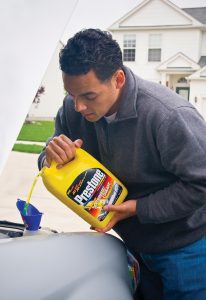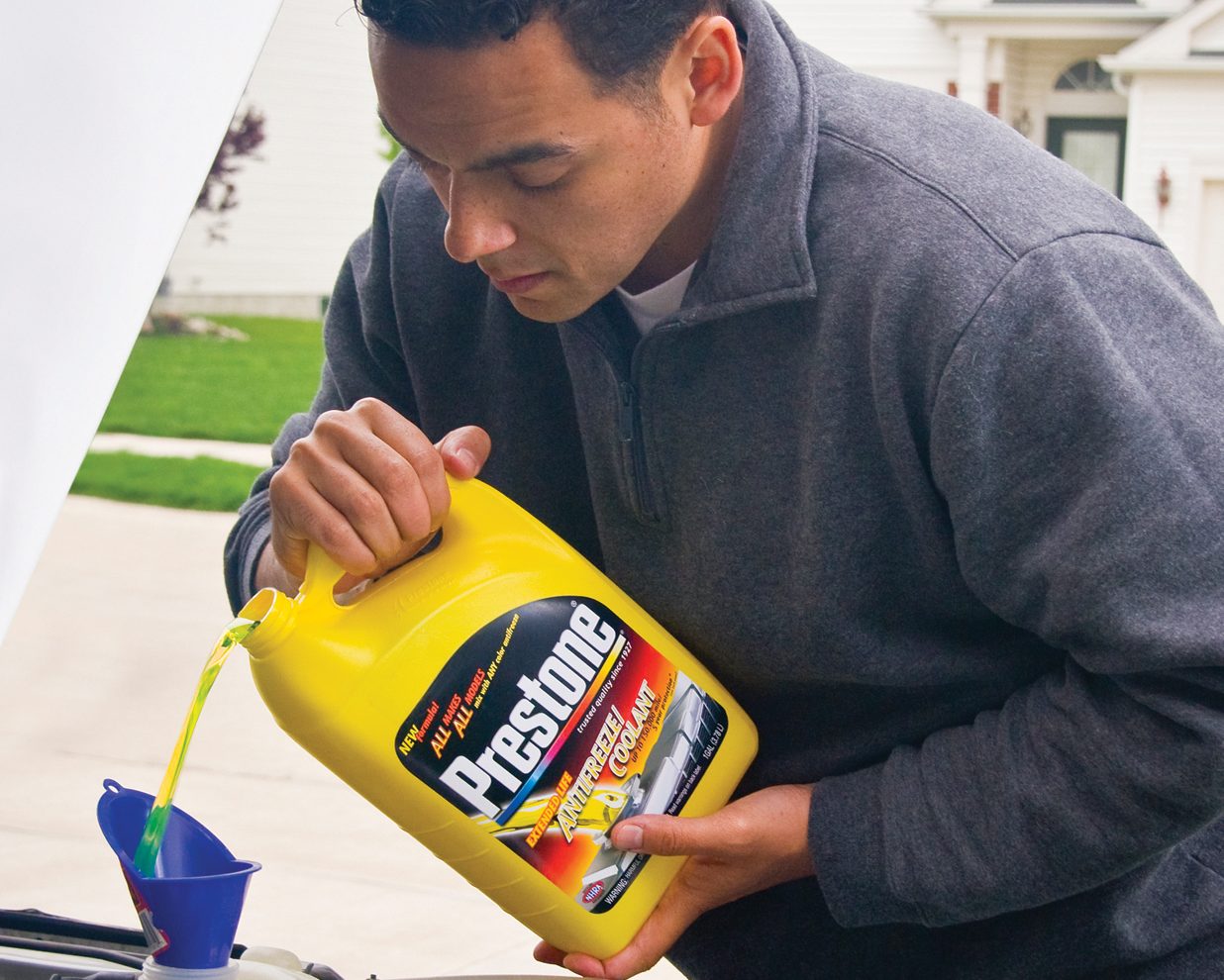Misleading by name, yet vital to the life of your car, antifreeze/coolant plays a critical role year-round in the healthy function of your vehicle, providing protection against overheating in the hot summer months as well as freeze protection in the cold winter. Jay Buckley, technical training manager for Honeywell Consumer Products Group, answers the top antifreeze questions on consumers’ minds.
1. Question: When do I need to have my antifreeze/coolant changed?
Answer: Change intervals can vary from vehicle to vehicle, from every 2 to 5 years, or 58,000-240,000 kilometres, whichever comes first. Always consult your owner’s manual for the proper change interval for your specific vehicle. And choose a good quality antifreeze/coolant like Prestone Long Life, which is designed for use with any antifreeze/coolant in any vehicle make or model. It’s perfect for technicians and consumers conducting a complete cooling system flush and refill. It is phosphate-, silicate- and borate-free and uses a special patented technology that provides extended life of the corrosion inhibitor package so that it lasts for up to five years or 240,000 kilometres (whichever comes first).
2. Question: Is a flush necessary when changing my antifreeze/coolant?
Answer: When changing coolant, it’s smart to do a complete flush. Just draining the system will not remove all of the coolant. If a full flush can’t be carried out, then the proper amount of a fully concentrated coolant should be added into the system before adding water. This will ensure the cooling system is completely full with the proper mixture of antifreeze/coolant and water. Make sure all the air is out of the system to avoid corrosion and ensure good heat transfer performance.
 3. Question: How do I know if my cooling system just needs to be “topped up�
3. Question: How do I know if my cooling system just needs to be “topped up�
Answer: Prestone engineers first recommend that motorists monitor coolant level and appearance and if needed test their coolant to ensure it doesn’t need to be changed. You can use test strips or Prestone Coolant Tester (which can be bought at your local auto parts store) to do that. If just a top up is needed, use a formula that removes the guesswork (Prestone Long Life Premixed Antifreeze/ Coolant is a good choice.) It features a precise blend of 50 percent antifreeze/coolant concentrate for temperature and corrosion protection and 50 percent demineralized water for ideal heat transfer protection; it is formulated and compatible for use with any antifreeze/coolant in both foreign and domestic cars and light duty trucks, old and new.
4. Question: How do I “top up†my antifreeze/coolant?
Answer: Nearly all vehicles today are equipped with a pressurized coolant recovery system. Part of this system is a plastic coolant expansion tank. It is usually located near the front of the engine compartment and is pressurized and connected to the rest of cooling system with a hose. You can monitor the coolant level by observing the coolant level in the expansion tank, and top up if necessary, according to instructions provided by the vehicle manufacturer in the owner’s manual or by the coolant supplier on the antifreeze/coolant label. Just be sure not to remove the expansion tank cap or the actual radiator cap when the engine is hot. Doing so can result in burns from the hot coolant/water mixture and/or steam.
5. Question: What is the proper water/antifreeze ratio, and why is it so important?
Answer: The reason antifreeze/coolant and water are mixed at a 50/50 ratio is to lower the freeze point of the cooling system to -34°F (-37°C) and to raise the boiling point of the system, in a vehicle operating at 15psi with a cap in good condition, to 265° F (129°C). Problems that can occur with a 30/70 percent mixture of antifreeze/coolant and water include: a raised freezing point, lowered boiling point and potential metal corrosion. Problems resulting from the over 70 percent antifreeze/coolant concentration may include slushing, additive stability, poor heat transfer, overheating, and of course, raised freezing point.
6. Question: Do I need to monitor the coolant condition and appearance in the summer and winter?
Answer: Yes, you should monitor your coolant level and condition throughout the year, as it enables the system to properly cool and heat your car’s engine.
www.newscanada.com




















Add Comment